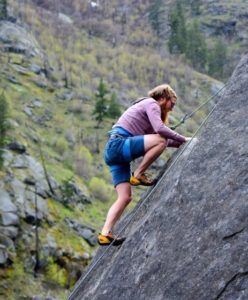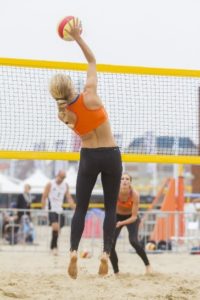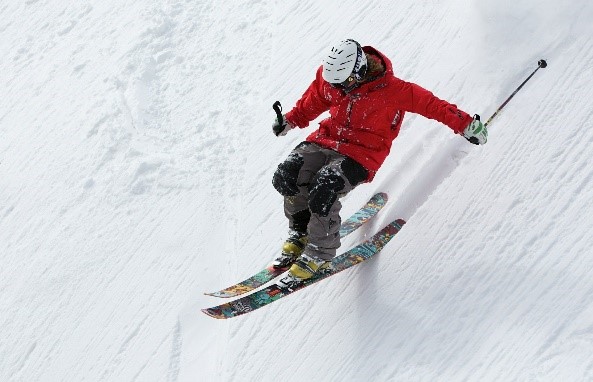Weekend Warriors: The Risks of a 2-Day Exercise Blitz
TGIF! The weekend arrives and you get out and shake off the work week with your favourite activity such as cycling, running, or mountain biking.
You figure exercise can only be good for you and you can never have too much of a good thing, but can you overdo it when you cram all your exercise into the weekend? There are many things you can do to make sure you can enjoy your active weekend hobbies without putting yourself out of commission.
Know the Risks
 People who do minimal physical activity during the week and then engage in a burst of highly strenuous activity on weekends are commonly referred to as weekend warriors. Trying to make up for 5 days of inactivity, weekend warriors can risk pushing themselves to the point of injury.
People who do minimal physical activity during the week and then engage in a burst of highly strenuous activity on weekends are commonly referred to as weekend warriors. Trying to make up for 5 days of inactivity, weekend warriors can risk pushing themselves to the point of injury.
Ankle injuries are one of the most common injuries for athletes at all levels of ability, particularly in sports that involve running, jumping and pivoting such as football, soccer, basketball, volleyball or racquet sports [1]. In sports that involve a lot of throwing, such as baseball, there’s a greater risk of injury to the shoulder. Mostly these injuries are shoulder strains that result from chronic overuse of the muscle and particularly vigorous activity in the shoulder muscles [2].
Hamstring strains are another common injury for weekend warriors, particularly in sports that involve a lot of sprinting, like football and track and field. People who are active in those sports often experience hamstring strains more than once, and causes have been thought to include muscle weakness, lack of flexibility, fatigue, or inadequate warm-up [3]. Plantar fasciitis, which causes heel pain, is another common complaint in the athletic population, particularly runners. Factors like overuse, incorrect training and inadequate footwear can be risk factors for this condition [4].
What Can You Do About It?
There are several things you can do before, after or during your chosen weekend activity to prevent injury. Firstly, it’s important not to neglect stretching. With tight muscles, you might compensate with the way that you move, putting strain on other areas like your low back. Stretching is only one part of a good warm up. By making your warm up a bit more active – by doing drills with a soccer ball or jogging, for example – it can help you avoid muscle strain. But don’t suddenly stop your activity either. Give your muscles a chance to recover by reducing your intensity, but keep moving.
Injuries can happen when you don’t consider your limits or push yourself beyond them. You’re likely doing your weekend activity because you enjoy it, and maybe like the opportunity for exercise. It’s fun to win, but there’s no need for reckless dives or to push your body to constantly be the fastest. By spreading out the activity during the week (even 15 minutes here and there makes a difference!) and trying to not get caught up in the rabid enthusiasm, you can keep yourself injury-free.
Massage Therapy Can Help
 Massage therapy is a great option to help you keep doing what you love without injury, both for the prevention and treatment of injuries. Massage therapy can help enhance the flexibility and balance of joints in the body which can help reduce injury [5]. If you’re already experiencing chronic shoulder tension because of a sport that involves a lot of throwing, massage therapy is a great option to reduce muscle tightness in the shoulder and increase range of motion [6].
Massage therapy is a great option to help you keep doing what you love without injury, both for the prevention and treatment of injuries. Massage therapy can help enhance the flexibility and balance of joints in the body which can help reduce injury [5]. If you’re already experiencing chronic shoulder tension because of a sport that involves a lot of throwing, massage therapy is a great option to reduce muscle tightness in the shoulder and increase range of motion [6].
Regular massage therapy can also immediately improve hamstring flexibility and is a great addition to your rehabilitation program [7]. In many sports you’re on your feet, moving around quickly and foot pain is very common. Massage therapy has been proven to be very helpful for reducing the heel pain from plantar fasciitis, as well as improving function [8].
From head to toe, and everywhere in between, massage therapy is a great treatment option for injuries to the soft tissues and the joints, many of which are common for weekend warriors. As a weekend warrior, you’re likely passionate about enjoying and succeeding in your sport, but be sure to ask your RMT how to make sure your hobby doesn’t lead to injury.
References
[1] Hunt, K. J., Phisitkul, P., Pirolo, J., Amendola, A. (2015). High ankle sprains and syndesmotic injuries in athletes. J Am Acad Orthop Surg, 23(11):661-673. [link]
[2] Cools, A. M., Johansson, F. R., Borms, D., Maenhout, A. (2015). Prevention of shoulder injuries in overhead athletes: a science-based approach. Braz J Phys Ther, 19(5):331-339. [link]
[3] Brockett, C.L., Morgan, D.L., Proske, U. (2014). Predicting hamstring strain injury in elite athletes. Med Sci in Sports Exerc, 36(2):379-387. [link]
[4] Petraglia,F., Ramazzina,I., Costantino, C. (2017). Plantar fasciitis in athletes: diagnostic and treatment strategies. A systematic review. Muscles Ligaments Tendons J, 7(1):107-118. [link]
[5] Park, J., Shim, J., Kim, S., Namgung, S., Ku, I., et al. (2017). Application of massage for ankle joint flexibility and balance. J Phys Ther Sci, 29(5):789–792. [link]
[6] Yang, J., Chen, S., Hsieh, C., Lin, J. (2012). Effects and predictors of shoulder muscle massage for patients with posterior shoulder tightness. BMC Musculoskelet Disord, 13:46. [link]
[7] Brummitt, J. (2008). The role of massage in sports performance and rehabilitation: current evidence and future direction. N Am J Sports Phys Ther, 3(1):7-21. [link]
[8] Fraser, J., Corbett, R., Donner, C., Hertel, J. (2017). Does manual therapy improve pain and function in patients with plantar fasciitis? A systematic review. J Man Manip Ther, 1-11. [link]


Leave a Comment